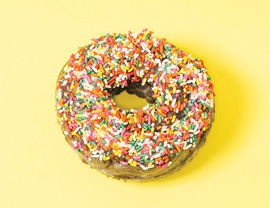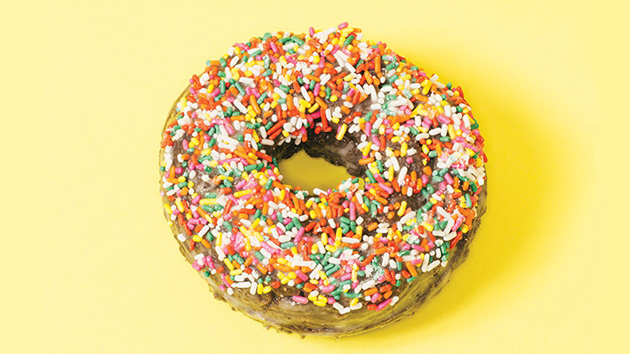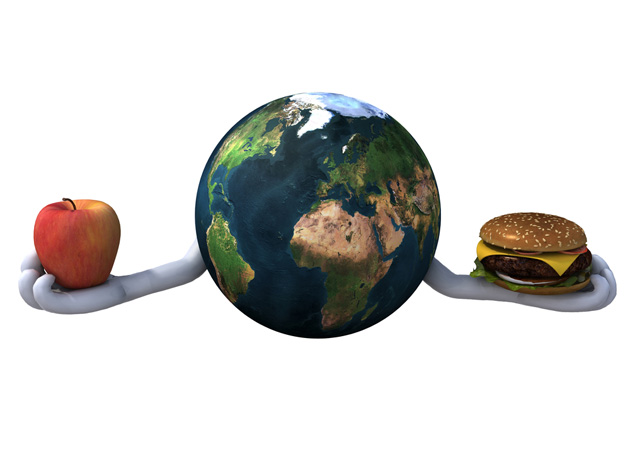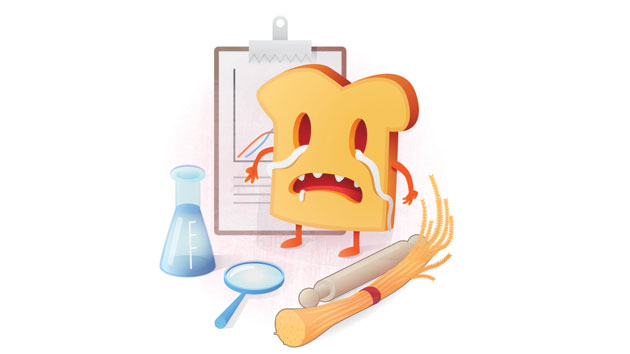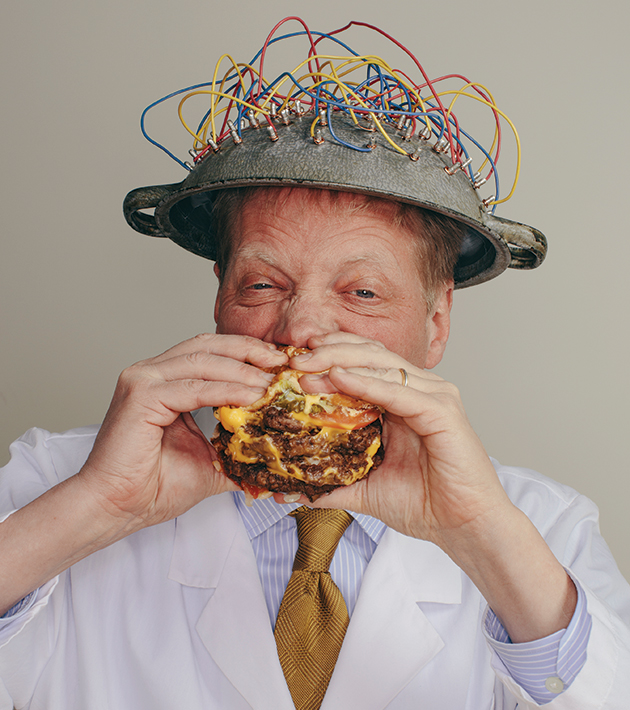
Update, September 20, 2018: Brian Wansink has announced his retirement, and Cornell University’s internal investigation has “found that Professor Wansink committed academic misconduct in his research and scholarship, including misreporting of research data, problematic statistical techniques, failure to properly document and preserve research results, and inappropriate authorship.” More here.
Update, September 19, 2018: The Journal of the American Medical Association has retracted six articles about studies that included Wansink’s work after Cornell University informed the editors, “We regret that, because we do not have access to the original data, we cannot assure you that the results of the studies are valid.”
Update, April 6, 2017: After an internal investigation of Wansink’s work, Cornell University found errors in Wansink’s work, but no misconduct, Retraction Watch reports.
Update, March 3, 2017: A group of researchers who reviewed several of Wansink’s studies and his writing alleged data inconsistencies and instances of self-plagiarism. We’re following the story here.
The Chicken Quesadilla Grande is calling to me. I am jet-lagged, starving, and fairly certain that a giant pile of melted cheese will dramatically improve my outlook on life. But right now, in front of a renowned authority on healthy eating? That doesn’t seem like such a great idea.
I’m here at an Applebee’s in Ithaca, New York, where Brian Wansink, a Cornell food psychologist, is evaluating my dining habits. So far, he says, I’ve got a few things going for me: We are seated by the window, which his research has shown makes us 80 percent more likely to order salad. And had we chosen a booth near the bar, our risk of ordering dessert would have been 73 percent greater. I should be glad, he says, that the ceiling lamps are casting a cheery glow and that Paula Cole’s “Where Have All the Cowboys Gone?” is playing softly; dim lighting and loud music are associated with consuming a lot of calories, not to mention lower satisfaction with the meal.
Maybe it’s thanks to the felicitous environment that, when the waitress arrives, I dutifully order the strawberry-and-avocado salad with grilled chicken. Then it’s Wansink’s turn. “I’ll have the bacon-and-ranch wedge salad,” he says. “Then the French onion soup and the cheeseburger sliders. And a Diet Coke.”
He seems pleased with himself. “I ordered basic comfort food,” he offers cheerfully. “You ordered a little funkier.” I try not to scowl. “If you tell people to be mindful of what they order, they don’t like it as much and they make up for it later,” he explains. “They tell themselves they deserve ice cream since they virtuously ate a salad for dinner.”
Great, I think, as I pick through bagged lettuce topped with rubbery chicken, a few mealy strawberries, and a cluster of stiff avocado slices. Across the table, Wansink is digging into his soup, wrapping long strings of melted Swiss around the spoon. By the time his sliders arrive, he’s so full he can only finish one. He has the waitress pack the other two to go.
Wansink runs Cornell’s Food and Brand Lab, devoted to studying how our physical surroundings—everything from supermarket layout to food packaging to the color of your kitchen walls—affect what and how we eat. The lab, which he founded at the University of Illinois in 1997 and moved to Cornell in 2005, draws funding from government agencies and industry trade groups. It houses two full-time faculty members, six to eight staffers, and 15 or so grad students, postdocs, and visiting scholars from such varied fields as food science, agriculture, economics, marketing, and psychology.
Nestled in a stately building on the campus of Cornell’s College of Agriculture and Life Sciences, the lab occupies a suite of offices and classrooms, plus what at first glance looks like an unremarkable seminar space: large rectangular table, white board, sleep-deprived grad students. But on experiment days, out come the tablecloths, dishes, and cutlery. Researchers configure furniture to resemble a restaurant or a home dining room and use hidden cameras and two-way mirrors to document their subjects’ actions.
After our lunch, I watch Wansink teach a graduate seminar on eating behavior. The students take turns reporting on their progress. A wiry postdoc named John is trying to figure out why people who indulge in novelty items like deep-fried Snickers bars at the state fair are thinner than those who opt for more conventional fare, like hamburgers. A slim, bespectacled Ph.D. candidate is using two versions of a clip from the movie Harold to study satiety. She has found that students who view a clip in which the characters finish their meal eat a little less afterward than those shown a version that ends with a meal in progress. Aner, a stocky Israeli researcher, plans to study whether shoppers who chew minty gum make healthier supermarket choices. When Wansink hears something he likes, he thumps the table and proclaims, “That is really cool data.”
Wansink is 54 and has a Nordic look about him—tall, with wispy blond hair, white eyelashes, and light-blue eyes. He’s perpetually animated, often literally yelping with delight. He grew up in Sioux City, Iowa, where his father worked at a commercial bakery, loading muffins onto a conveyor belt. As a teen, he became fascinated with the life of Herbert Hoover, especially his work on improving food access for Americans. “He kept people from starving,” Wansink says. “I said to myself, ‘If I can ever do a fraction of what he did for food aid, I’ll be the luckiest guy in the world.'”
Wansink is not overweight in the slightest, nor is he remarkably fit. He exercises on occasion and tries “not to eat anything too awful,” but he doesn’t diet. His Taiwanese American wife, Jeryuan, who trained as a chef at Le Cordon Bleu, cooks standard American fare when her husband is home. When he’s out, she makes Chinese food—which he doesn’t like—for herself and their three daughters. Wansink rises at precisely 4:46 a.m. daily and often works past dinnertime. He is astonishingly prolific—he has published 123 studies since 2005, when outlets from Oprah Winfrey’s O magazine to the New York Times covered his findings that people who used smaller plates and tall, thin glasses consumed fewer calories than those using larger plates and short, squat glasses. The thrust of his research directly contradicts the prevailing wisdom in nutrition circles—that the way to improve America’s diet is to teach people about the dangers of trans fats, refined sugar, and white flour. In Wansink’s view, that’s a losing battle—if we were rational eaters, the snack food industry would already be out of business. “There are a million nutritionists out there that tell you to eat an apple instead of a Snickers bar,” he says. “I want to meet people where they’re at.”
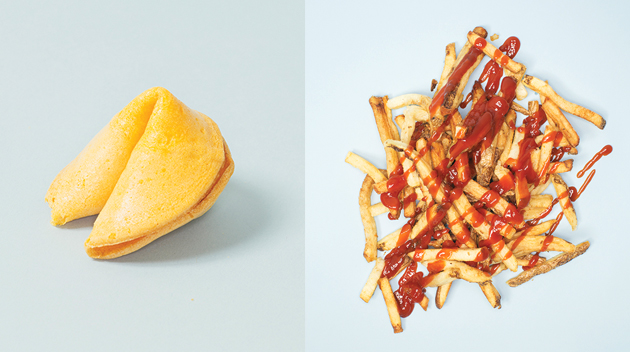
Wansink truly burst onto the popular scene with his 2006 book, Mindless Eating: Why We Eat More Than We Think, which became a New York Times bestseller. You might think of “mindless eating,” he wrote, as inhaling a bag of chips in front of the TV. Instead, look at it as making small tweaks to your habits—using small plates, keeping the cereal in the cupboard instead of on the counter, or starting your grocery shopping in the produce aisle.
If we really want to eat better, Wansink explains, we have to trick our brains into making the right choices. The Food and Brand Lab once counseled a man—random people sometimes call in with questions or problems—who wanted to quit drinking Slurpees every day. The team knew that just telling him to avoid 7-Eleven wouldn’t work. “So we told him that he had to drink it in the parking lot,” Wansink says. “He had to sit there and drink that stupid thing and get brain freeze.” Pretty soon, Slurpee Guy kicked the habit.
As for his personal choices, Wansink considers organic food a waste of money, drinks six diet sodas daily, and takes his kids to McDonald’s after church on Sundays. He rejects the notion of good calories and bad calories—within reason, he believes, what we eat matters less than how much we eat. (Indeed, researchers at the National Institutes of Health recently found that adults placed on balanced diets containing processed carbs from foods like white bread, instant rice, and fruit packed in sweet syrup fared just as well—at least in terms of cardiovascular risk factors—as those who got their carbs from apples, whole grains, and steel-cut oats. But eating fewer carbs and overall calories made a difference.) It’s not like Wansink doesn’t think we should eat our veggies. He’s just realistic about it. “It would be great if we could be mindful eaters,” Wansink says. “But most of us don’t have the luxury of cutting a pea in half, tasting it, and asking ourselves, ‘Are we full yet?’ We have full-time jobs. We get home and the kids are running around. It’s a lot easier for us to set up our most immediate environment so that it’s easier to eat better.”
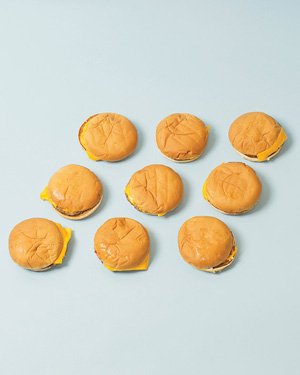
A lifelong libertarian, he also opposes soda taxes and laws that require fast-food restaurants to post nutritional information. He considers such tactics elitist, and he hates nothing more than elitism. You might think of him as the anti-Alice Waters. When I told him I was hoping to go to the Moosewood Restaurant, Ithaca’s renowned temple of vegetarian hippie food, he winced. “The waiters and waitresses there seem really snooty,” he said. “And it is so expensive.” He prefers Taco Bell. “Where else can you feed a family of five for under $10?”
But if he doesn’t fit in with the reigning class of foodie intellectuals, he has developed a reputation as a lovable provocateur. The New York Times called Wansink’s work “brilliantly mischievous.” New York University nutrition professor and author Marion Nestle publicly disagrees with his stance that government can’t fix the obesity epidemic—but assigns his books to her students anyway. Food journalist Mark Bittman has debated him on whether healthy eating is a matter of conscious choice (Bittman’s belief) or responses to environmental cues (Wansink’s), but the two are buddies. When Bittman came to visit Ithaca in 2013, he had dinner chez Wansink.
Note to self: Put the cereal away and use smaller plates. That is, when you actually cook—which, for most of us, isn’t all that often. Studies in recent years have found that Americans eat 43 percent of their meals away from home and consume 31 percent more packaged food than fresh. So how do you convince restaurants to downsize their entrées and companies to offer fewer chips per bag?
These kinds of changes won’t happen unless they’re profitable, Wansink says—and they can be. His aha moment came in a movie theater in 1995. Then an assistant professor of marketing at the University of Pennsylvania’s Wharton School of Business, he was working on an experiment about food packaging. He wanted to see whether moviegoers would eat less snack food if it came in clear containers. He and his grad students had planned to dump Wheat Thins and M&M’s into large Ziploc bags, but by mistake they also brought some tiny, snack-sized ones. Since there weren’t enough large bags to go around, some moviegoers got four small ones instead.
Something surprising happened: Most people who received the four small bags finished only one or two. In a follow-up questionnaire, Wansink asked the participants how much more they would pay for snacks that came in lots of small packages instead of one big one. A majority said they’d spend 20 percent more.
He took his findings to food industry executives, who were skeptical. Eventually, though, Kraft’s Nabisco division began offering snacks in packages that contained several 100-calorie pouches and cost more than the equivalent amount in one big package. It was a hit, and over the next few years, the other food giants followed suit. “There are all sorts of ways that companies can help people eat better and make more money,” Wansink says. “But they just don’t think of these things.”
At first, the whole idea seemed counterintuitive to me. After all, don’t companies want us to consume as much of their product as possible? Wansink explained that this isn’t always the case. For a 2008 study, for instance, his researchers secretly observed 213 diners at 11 Chinese buffets across the United States, noting details like where they sat, how long it took them to finish eating, which foods they chose, and how many times they returned to the buffet.
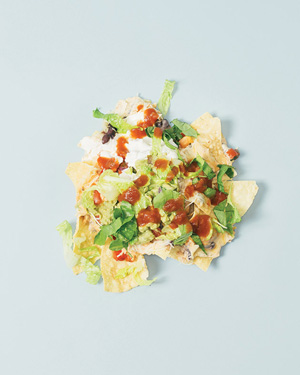
By matching diners’ body shapes to height and weight charts, the team was able to estimate their body mass indexes. They began to notice stark differences in behavior: Most of the thin diners ate with chopsticks; the heavier ones used forks. The thin diners tended to use smaller plates; the heavier diners chose larger ones. And while 71 percent of the thin people surveyed the entire buffet before helping themselves to the most appealing dishes, the heavier folks usually launched right in and took a bit of everything, Wansink wrote, “that they didn’t hate.” On average, the heavier diners sat 16 feet closer to the buffet than the thin ones, who also tended to choose seats facing away from the buffet. Wansink shared his findings with the owner of a chain of 63 Chinese buffets in central Pennsylvania. Soon after, the owner ditched forks for chopsticks, downsized the plates and placed them so that diners had to walk past the entire buffet before serving themselves, and put up folding screens so diners couldn’t see the food from their seats. The owner’s son, Wansink says, estimated savings of around $36,000 per year per restaurant.
Companies aren’t always so quick to adopt his ploys. In the snack food aisle of a local supermarket, Wansink stops in front of the chips to tell me about a recent study he did with cans of Pringles. At intervals of either 7 or 14 chips (it didn’t matter much which), his team inserted a Pringle dyed with red food coloring. Lab subjects who got these subtle reminders consumed 50 percent fewer chips on average than control snackers who got regular Pringles.
“But what’s in it for the company?” I ask.
“Well, one thing you might want to look at is how many different kinds of Pringles there are,” Wansink says. “To have even just one version that is calorie controlled,” he says, might persuade a health-conscious shopper to buy Pringles instead of, say, low-fat Cheese Nips. “So that’s definitely a win.”
So far, Kellogg’s, which owns the Pringles brand, hasn’t tested this strategy in the marketplace, and that’s okay with Wansink—maybe some other company will. The Food and Brand Lab accepts funding from food companies, Wansink says, but on the condition that the research they fund is applicable to the entire sector. For example, a major soy-processing company funded a study on how to encourage young women to eat more tofu. The findings—that the most successful campaigns emphasize tofu’s low calorie count and convenience rather than its health benefits—are published and available for any tofu seller to use.
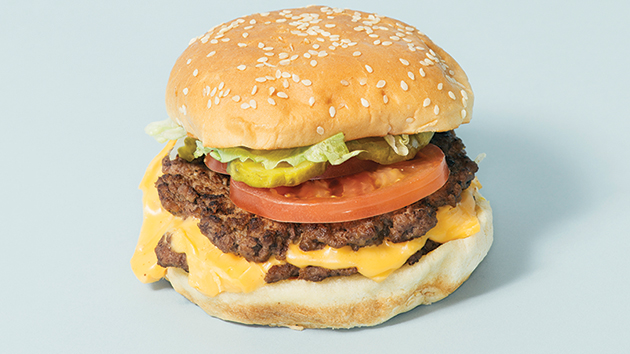
Outside the boundaries of the lab, Wansink did take on one major private client: McDonald’s. In 2008, he’d independently funded a study on Happy Meals, spending three weeks watching kids dine. He found that it didn’t matter much what McDonald’s put in the meal. Kids mainly cared about the toy—in fact, most stopped eating once they’d unwrapped it. Three years later, McDonald’s hired Wansink to determine whether some changes it had made to Happy Meals—ditching the caramel sauce that accompanied the apple slices and promoting milk instead of soda—had actually prompted kids to eat more nutritious food at its restaurants. (Wansink found that they had.) “What makes Happy Meals happy and fun is not the food, it’s the atmosphere and the toys,” he says. “McDonald’s wins because parents feel less guilty about taking their kids there.”
Wansink gushed so much about his favorite brands—McDonald’s, Taco Bell, Coke—that it triggered my conflict-of-interest detector. But he’s no shill. He just genuinely believes that corporations can be the most powerful instruments of change, and well-meaning too. “More so than a lot of family restaurants,” he told me in all earnestness, “McDonald’s wants to do the right thing.”
That faith in the marketplace is what sets Wansink apart from advocacy groups that have tried to shame food companies into making healthier products. The University of Connecticut’s Rudd Center for Food Policy and Obesity, for example, issues regular reports on the outlandish size of fast-food kids meals, exposes the major chains that target children with advertising, and urges the government to adopt policies that discourage manufacturers from making unhealthy food.
Nutritionist Marion Nestle thinks Wansink’s approach doesn’t go far enough. “He’s enormous fun and has clever ideas about how to nudge people to make healthier food choices,” she said in an email. But trying to convince individual companies to make the right choices “is highly inefficient—some will, some won’t. That’s why regulations work better. They require food companies to act responsibly across the board.” Michele Simon, a public health lawyer who writes about food politics, agrees. “McDonald’s gets such huge praise for getting rid of caramel sauce,” she says. “But they are still peddling junk food to three-year-olds. What is Brian Wansink doing to stop Ronald McDonald from going into elementary schools?”
Actually, Wansink wouldn’t object to McDonald’s going into elementary schools, so long as it offered some nutritional options. And he has, in fact, tried his hand as a policymaker. From 2007 to 2009, he took leave from Cornell to serve as the executive director of the US Department of Agriculture’s Center for Nutrition Policy and Promotion, the agency that created the food pyramid (now called MyPlate). Four months in, he launched a program in which the agency’s website featured food companies that pledged to make their products healthier; by the end of his term, more than 100 had signed on. “Almost all the companies did what they said they were going to do,” Wansink says. For example, Yum! Brands (KFC, Taco Bell, Pizza Hut) launched tray liners with nutrition games for kids, and Campbell’s Soup developed a web application to help people manage their diet. But he found himself constantly trying to convince his colleagues that lecturing Americans about nutrition won’t change people’s habits.
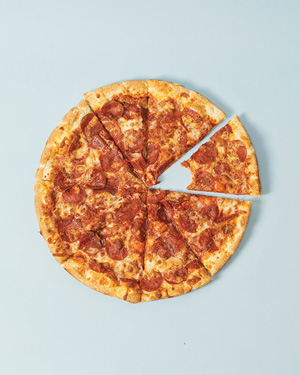
After President Obama was elected, Wansink (who’d voted for McCain) returned to Cornell eager to continue his work with the private sector. “There is no way the government is smart, wealthy, or creative enough to be able to change what people do when it comes to food,” he told me, “because it happens all across their lives, where they work, where they play. No one entity can do that.”
And yet, now he’s back in the business of helping make a government regulation work. His latest target might be the most challenging yet: children.
In 2012, the Obama administration began to tighten nutritional standards for the $12 billion school lunch program, making fruits and vegetables mandatory, adding whole-grain requirements, and reducing the sodium limit. While some health groups hailed the changes, school nutrition directors complained. The kids were throwing away the healthier food, they said. USDA records found that lunchroom attendance declined by about a million students the day after the rules kicked in.
Wansink, no surprise, doesn’t like the new regulations, but he’s pragmatic. “The laws are what they are,” he says. “Let’s figure out how to get the kid to willingly take the fruit or vegetable. Then there is no longer going to be an issue.” Indeed, his lab was trying to improve school food even before the new regs took effect. In 2009, Wansink launched a study of cafeteria behavior that resulted in Smarter Lunchrooms, a program that teaches nutrition directors how to entice kids through design.
Many parents won’t be surprised to learn that Wansink found children to be exquisitely sensitive about food presentation. One of his studies, in 2011, determined that serving fruit in colorful bowls instead of metal trays more than doubled fruit consumption at school. In another, from 2013, he found that schools that switched from whole to sliced apples saw 48 percent fewer apples wasted and a 73 percent increase in students eating more than half of their apples. It also turned out that giving vegetables fun names—like “X-Ray-Vision Carrots” or “Silly Dilly Green Beans”—persuaded kids to eat 35 percent more veggies.
So far, some 17,000 schools have used the Smarter Lunchrooms training. Many report success. Jessica Shelly, director of food services for Cincinnati’s public schools, implemented a few simple changes, such as placing the plain milk before the flavored milk in the line, changing food names, and adding a toppings station. “It’s so awesome to see a student who went over to the salad bar to put some cumin on their chicken soft taco also end up adding some red pepper strips and broccoli florets to their plate,” Shelly told me via email. Lunch attendance increased, and her once-struggling program climbed out of the red. In 2013, it turned a $2.7 million profit.

The day after our Applebee’s lunch, Wansink takes me to a local market, where we stroll through the aisles as he dispenses bits of advice. Try to spend at least 10 minutes in the produce section, he says. Shoppers who do this buy significantly more produce than those who breeze through. Buy the economy-size cereal to save money, but divide it into smaller containers when you get home. Next year, he hopes to take a sabbatical so he can organize all of his tips into master checklists for stores, restaurants, and consumers.
He stops to extoll the virtues of bagged salad greens. “There are people who are really against bagged salad,” he says. “Purist cooks say, ‘You’re a lazyhead. You should be doing this yourself.’ That’s what my wife says. But when she’s not around, it’s often what I buy. It makes me a whole lot more likely to have a salad, because it takes three steps out of the process.”
He begins to tell me about a study he did with Birds Eye on how to get people to eat more frozen vegetables. Two sets of participants were told different versions of a story about a woman named Valerie. In the first one, she has a busy day, and when she gets home she serves her family a dinner of pasta, warmed-up leftover chicken, bread, and green beans from the freezer. The second version is exactly the same—minus the green beans.
When the researchers then asked study participants to describe Valerie, they were shocked at the difference in the responses. “People will rate Valerie when she uses beans as, ‘Oh, she’s a good mother, she is stressed out, but you can see that she cares for her family; she’s really a good cook,'” Wansink says. “If you don’t have the beans, people are like, ‘Oh my God, this lazy excuse for a woman. What is she doing? It’s all about herself; she is so self-centered.'”
He picks up a bag of baby spinach salad. Inside is a plastic packet of Craisins for a garnish. “I don’t want to make vegetables,” he says. “It’s just one more thing that I have to put on the table, and my kids don’t really care if they’re there or not.” But if serving healthy food makes you feel like you’re doing right by your kids, Wansink says, that’s the extra motivation you need. “The study is about how Valerie comes off to other people,” he says, “but probably you feel that way about yourself too.”

